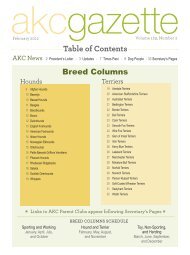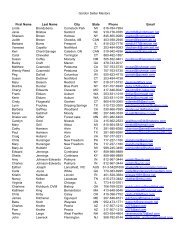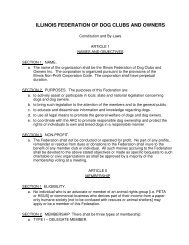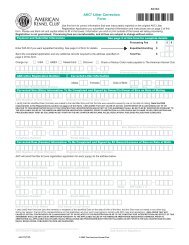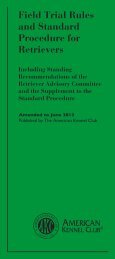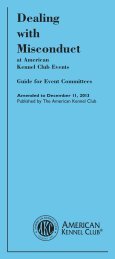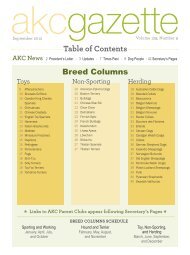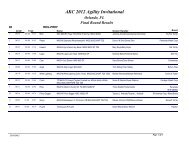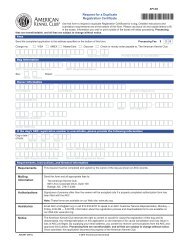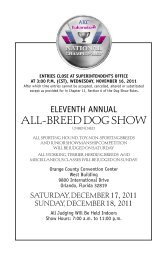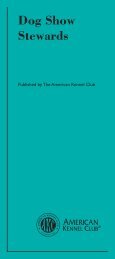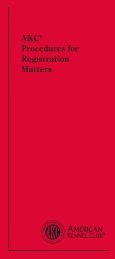Obedience Regulations - American Kennel Club
Obedience Regulations - American Kennel Club
Obedience Regulations - American Kennel Club
You also want an ePaper? Increase the reach of your titles
YUMPU automatically turns print PDFs into web optimized ePapers that Google loves.
score, although permissible, puts judges at a disadvantage when asked<br />
to explain decisions.<br />
Natural Manner. the <strong>Obedience</strong> <strong>Regulations</strong> place emphasis on<br />
handling that appears natural. the Heel on leash and Figure eight exercise<br />
specifically states that the hands must be in a natural position but do<br />
not require that they be at the handler’s side while heeling on leash. it is<br />
up to each judge to decide when, and to what extent, the performance of<br />
any particular handler is lacking in naturalness and when the hands of<br />
the handler are not in a natural position. A judge is expected to penalize<br />
a handler if, in the judge’s opinion, the handler’s manner or handling is<br />
unnatural. on the other hand, no judge should consider that a handler is<br />
unnatural just because they do not perform with the hands and arms in<br />
the same position for each exercise. Any motion that the judge considers<br />
to aid the dog’s performance should be penalized.<br />
Collars. Dogs in the obedience ring must wear a properly fitted collar<br />
approved by the judge. no special training collars, such as electronic<br />
collars or prong collars, will be permitted. nothing may be hanging<br />
from the collars.<br />
no dog may enter the ring, either for judging or for awards, with unacceptable<br />
equipment. Handlers are not permitted to wear such things as<br />
waist packs/pouches or any item that, in the judge’s opinion, appears to<br />
be a training device or aid.<br />
Disqualification and Excusal. the <strong>Obedience</strong> <strong>Regulations</strong>, under the<br />
provisions of chapter 1, sections 17, 17a and 18, and chapter 2, sections<br />
25 and 27, cover the conditions and procedure for handling situations<br />
requiring the disqualification or excusal of a dog and its handler. A dog that<br />
has been disqualified may not compete again, unless and until following<br />
an application by the owner to the AKc, the owner has received official<br />
notification from the AKc that the dog’s eligibility has been reinstated. the<br />
four reasons for disqualifying a dog at an obedience trial are if the dog is:<br />
• Blind — without useful vision<br />
• Deaf — without useful hearing<br />
• Changed in appearance by artificial means for cosmetic reasons<br />
• Attacks or attempts to attack a person in the ring<br />
A dog is excused if it is brought into the ring with bandages, stitches<br />
or is taped in any manner. the judge must excuse the dog and may not<br />
judge the dog later in that class, even if the bandages, tape or stitches<br />
93<br />
<strong>Obedience</strong> Judges’<br />
Guidelines




